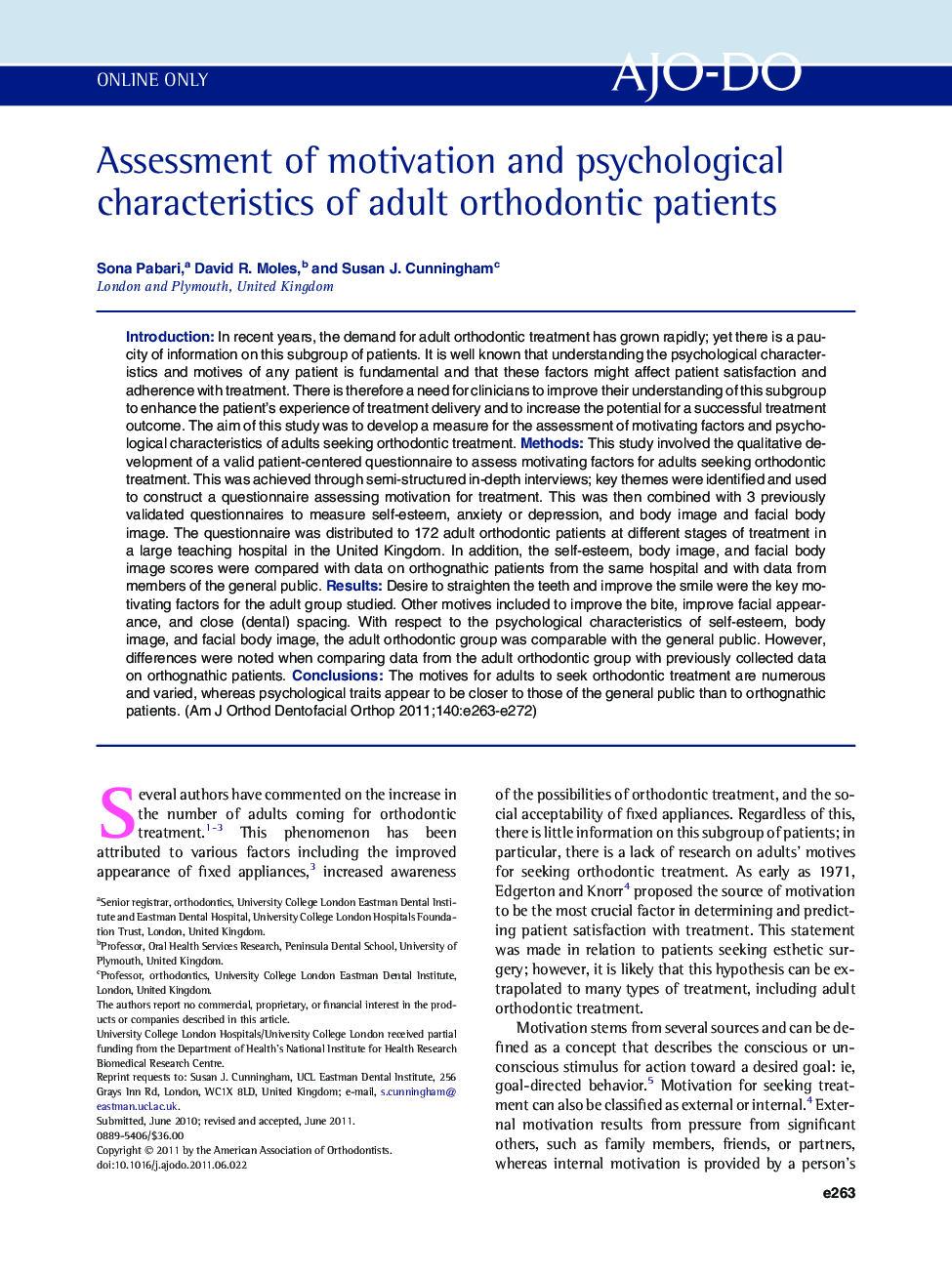| Article ID | Journal | Published Year | Pages | File Type |
|---|---|---|---|---|
| 3117160 | American Journal of Orthodontics and Dentofacial Orthopedics | 2011 | 10 Pages |
IntroductionIn recent years, the demand for adult orthodontic treatment has grown rapidly; yet there is a paucity of information on this subgroup of patients. It is well known that understanding the psychological characteristics and motives of any patient is fundamental and that these factors might affect patient satisfaction and adherence with treatment. There is therefore a need for clinicians to improve their understanding of this subgroup to enhance the patient’s experience of treatment delivery and to increase the potential for a successful treatment outcome. The aim of this study was to develop a measure for the assessment of motivating factors and psychological characteristics of adults seeking orthodontic treatment.MethodsThis study involved the qualitative development of a valid patient-centered questionnaire to assess motivating factors for adults seeking orthodontic treatment. This was achieved through semi-structured in-depth interviews; key themes were identified and used to construct a questionnaire assessing motivation for treatment. This was then combined with 3 previously validated questionnaires to measure self-esteem, anxiety or depression, and body image and facial body image. The questionnaire was distributed to 172 adult orthodontic patients at different stages of treatment in a large teaching hospital in the United Kingdom. In addition, the self-esteem, body image, and facial body image scores were compared with data on orthognathic patients from the same hospital and with data from members of the general public.ResultsDesire to straighten the teeth and improve the smile were the key motivating factors for the adult group studied. Other motives included to improve the bite, improve facial appearance, and close (dental) spacing. With respect to the psychological characteristics of self-esteem, body image, and facial body image, the adult orthodontic group was comparable with the general public. However, differences were noted when comparing data from the adult orthodontic group with previously collected data on orthognathic patients.ConclusionsThe motives for adults to seek orthodontic treatment are numerous and varied, whereas psychological traits appear to be closer to those of the general public than to orthognathic patients.
